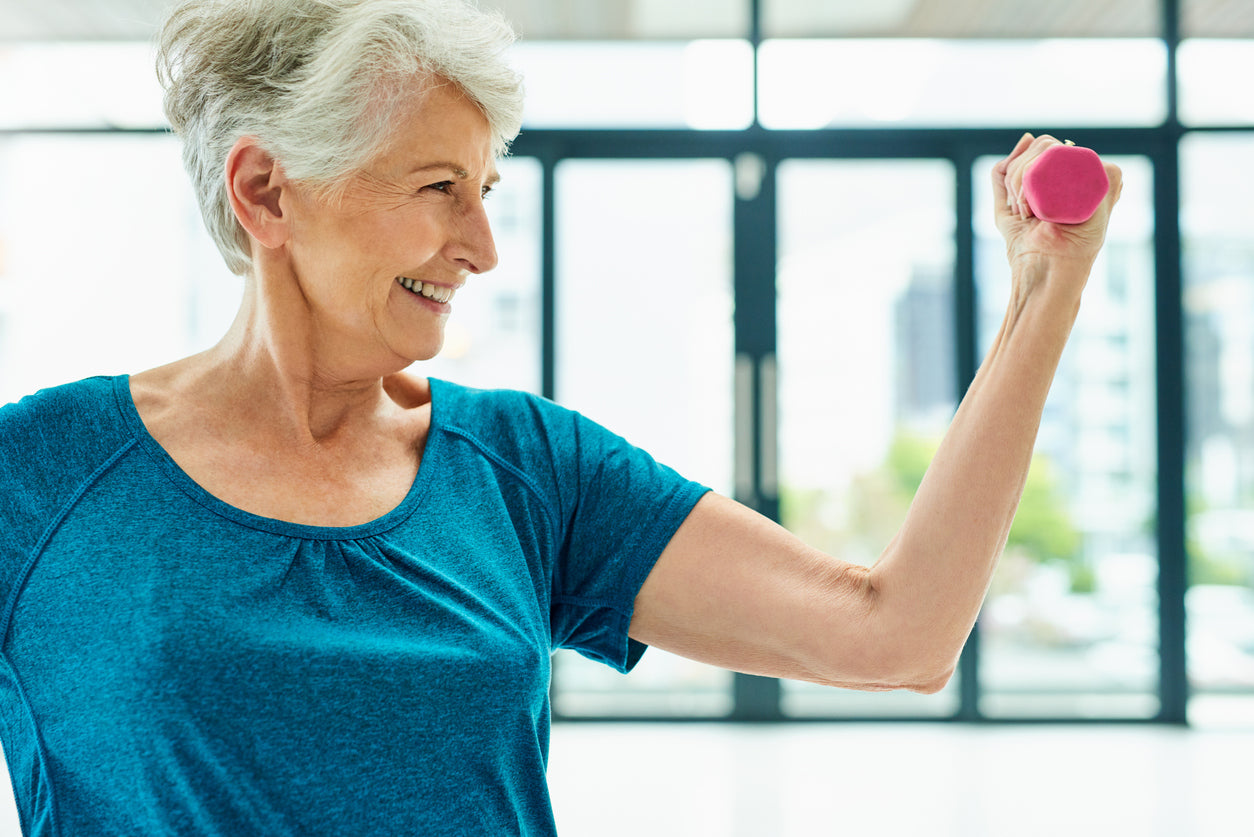
Natural Ways to Protect Against Osteoporosis
Getting older has its benefits. Senior citizen discounts are certainly big perks. (Can anyone say hello AARP?) However, it’s not all sunshine and roses as we age. Our golden years can be filled with health conditions that suck the joy right out of life.
High blood pressure, incontinence, and random aches and pains are among the issues that can crop up. Another common health concern – especially for women – is osteoporosis.
In this article we’ll explore:
- What is osteoporosis?
- Who is at greatest risk for developing osteoporosis?
- What are the signs of osteoporosis?
- What are natural ways to protect against osteoporosis?
What is osteoporosis?
Osteoporosis, sometimes called brittle bone, makes your bones weak. The slightest fall or even mild stress like coughing too hard can cause bone fractures. These injuries are most common in the hips, spine, and wrists.

Before you can get a handle on what osteoporosis is, we should probably talk about bone. Constructed mostly of collagen, our bones are living, growing tissue.
Collagen serves as the framework for your bones. It’s paired with calcium phosphate to add strength. More than 99% of the calcium found in the human body is contained within our bones.
Bone hardness varies throughout the human body. The femur (thigh bone) is the longest and strongest bone in the human body. The clavicle (collar bone) is the weakest.
Causes of osteoporosis
Certain risk factors make you more likely to develop osteoporosis. Age, gender, and genetics all play a role. Asian and Caucasian women over age 50 are most at risk for this bone density disease.
If you have a history of osteoporosis in your family, it increases your risk of developing a brittle bone condition. Some genes are more prevalent in people with osteoporosis, according to a genome-wide association study.
Who is at greatest risk for developing osteoporosis?

Nearly 20% of women over age 50 live with osteoporosis. Men aren’t entirely off the hook, though. Roughly 5% of men develop this brittle bone condition in their senior years.
Hormones help explain one reason women are more prone to the condition than men. When you have too much or too little of certain hormones in your body, it can weaken your bones.
- Lower estrogen is a risk factor for developing osteoporosis. Women produce less of this sex hormone after menopause.
- Overactive thyroid contributes to bone loss, upping the risk for osteoporosis.
What are the signs of osteoporosis?
Osteoporosis can be silent in the early years, making it difficult to detect. However, once the disease has progressed, you may experience some of the following signs and symptoms:
- Back pain from collapsed or fractured vertebra, most often in the lower back.
- Bones that break easily.
- Shrinking in height as you age.
- Shortness of breath from compressed discs pushing on lungs.
- Stooped posture and curvature of the spine.

If you have any of these signs or symptoms, speak with your medical provider to get assessed for osteoporosis. If back pain is a chronic issue for you with this disease, you can find all-natural relief with an herbal pain spray or roll-on that doesn’t cause side effects.
Are there natural ways to prevent osteoporosis?
While some of the risk factors for developing osteoporosis are out of your control, others are not. There are plenty of natural ways to protect your bone health. Here are just a few suggestions.
- Change your eating habits. Consuming adequate amounts of calcium and Vitamin D is a must if you want to protect your bones against osteoporosis. Your doctor also might prescribe calcium and Vitamin D supplements in addition to recommending natural food sources rich in these vitamins and nutrients.
- Get up and move. Regular exercise – including weight-bearing activities like walking – can protect your bone density. If you’re healthy enough to tolerate it, group exercises like Crossfit, Pilates, and Zumba also combat osteoporosis.
- Limit daily alcohol intake. If you have 2 or more drinks each day, you increase your risk of osteoporosis. Alcohol decreases your bone density and weakens the mechanical properties of your bones, making them more susceptible to the disease.
- Quit using tobacco. Smoking and other tobacco use increase the risk of bone fractures.
Shari Berg is a researcher, frequent blogger, feature writer, and author of Wars End with Me.
Sources
- Alcohol and Other Factors Affecting Osteoporosis Risk in Women. pubs.niaaa.nih.gov. Accessed December 6, 2022.
- Does Osteoporosis Run in Your Family? cdc.gov. Accessed December 6, 2022.
- Evidence on physical activity and osteoporosis prevention for people aged 65+ years: a systematic review to inform the WHO guidelines on physical activity and sedentary behaviour. ijbnpa.biomedcentral.com. Accessed December 6, 2022.
- Hardness, an Important Indicator of Bone Quality, and the Role of Collagen in Bone Hardness. ncbi.nlm.nih.gov. Accessed December 6, 2022.
- Osteoporosis. mayoclinic.org. Accessed December 6, 2022.
- Osteoporosis. my.clevelandclinic.org. Accessed December 6, 2022.
- The genetics of osteoporosis. academic.oup.com. Accessed December 6, 2022.
- Tobacco and bone fractures. ncbi.nlm.nih.gov. Accessed December 6, 2022.
- What is Bone? bones.nih.gov. Accessed December 6, 2022.
